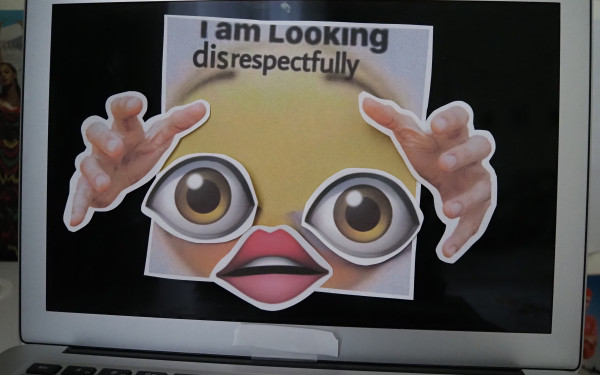Viral Hit Machine
Like lightning and chicken pox, viral videos rarely strike the same place twice. But unlike either lightning or the flu, you’re damn lucky if you get even one.
Since its inception, Montreal startup XtraNormal has been counting on some of its users making videos that go on to Internet stardom. With such a large pool, they’d be hard-pressed not to produce a few gems.
The company’s motto, “If you can type, you can make movies,” isn’t just a vapid promotional slogan: It’s their product. The site features easy-to-use animation tools that can be mastered by even the technologically ignorant and which are available online.
On the website, users select the appropriate character models and sets and simply enter the desired dialogue, punctuated by symbols that serve as cues for camera angles and the like.
“In 10 minutes, people can get it down,” says XtraNormal’s production manager Melissa Chou. “Because the rest is just a matter of perfecting your script.”
“If you want to do animation at home, you need to be pretty proficient in a lot of tools, hold an animation degree or spend some time in an animation studio,” said Chou, who herself has degrees in sociology and communications from Concordia. “What we’re doing is democratizing animation.”
Unlike most startup companies—which might spend six months working out the kinks in the technology before they launch their product—XtraNormal has been working on their animation software consistently since 2005.
“We think we’re going to be profitable in July,” said Bruno Langlais, VP Marketing & Business Development. “Maybe even earlier.”
“Maybe,” agreed Chou, laughing.
That’s because at any moment, a user-generated video could go viral, bringing an untold number of new users to the site.
For instance, a user-created video called “iPhone4 vs. HTC Evo,” which was uploaded last June by user tinywatchproductions and has since garnered 12 million views, resulted in a huge windfall of new users and media attention. The video was posted on the technology blog TechCrunch. Soon after, XtraNormal was everywhere.
Seven months later, the atmosphere at their headquarters on Casgrain Street is relaxed and laid-back. But there’s anticipation in the air.
“We know it’s got the potential to be extremely profitable,” said Langlais confidently.
The question is, how profitable, exactly?
“We want it to be as big as Facebook is. I want to be having drinks with Mark Zuckerberg,” Langlais added, grinning shamelessly.
As unrealistic as that might sound, XtraNormal has attracted its share of admirers in the corporate world.
Graham Sharp, the former CEO of Avid Technology, which produces non-linear editing programs that are widely in use in the commercial film and television industry, saw the clear potential of XtraNormal when he took control of the company in July 2010.
Changing the company’s model from one that produced animation software for businesses in the entertainment industry to one tailored specifically for the consumer, Sharp wanted to attract the same audiences that regularly line Zuckerberg’s coffers: people who just want to interact with their friends online.
For every video produced using XtraNormal that goes viral, there are a plethora of videos that serve as inside jokes between friends or members of a particular profession.
“[XtraNormal] is just a mode of expression,” said Langlais, noting that the user-generated portions of the video content are owned solely by the user, and that only the character models and backgrounds are copyrighted.
“People expressed themselves on forums, then they moved to blogs, and now they’re moving to video-making,” he added.
A video that became popular among hospital staff across the world, entitled “Anesthesia vs. Orthopedia,” is so loaded with industry terminology and jokes related to the profession that “you or I wouldn’t find it funny,” said Langlais. “But if you’re a doctor, it’s bloody hilarious.”
Although the site is regularly updated with stock characters that can be purchased individually—such as a Barack Obama lookalike for the politically-minded set, to a couple of guidos for the Jersey Shore-inclined—the most popular avatars are also the most non-descript.
“What we found out is that a lot of our generic characters are the most popular, because people can use them as stand-ins for themselves,” said Chou. “It’s really a great tool for self-expression and for the world to hear your woes, and if you don’t want people to know it’s you, nobody needs to know.”
“If you want to make fun of your boss, you want to do it under the banner of a small bird,” said Langlais.
But the animation tools aren’t perfect.
Nick McArthur, the author of Short Accounts of Tragic Occurrences, released by DC Books in 2009, was hired by XtraNormal upon graduating from Concordia’s creative writing program in 2008 to help write dialogue and create short videos to show off the software’s potential.
“There was a lot of limitation in writing,” he says of the software, which, it should be said, was still in its infancy at the time.
Because the electronic voices that accompany the user’s own dialogue lack precise intonations, he said, “it’s more similar to writing prose than writing a TV script, because you can’t allow a lot of interpretation on the part of the actors, the way you would if you were actually writing a TV show or movie.”
Despite its shortcomings, said Langlais, XtraNormal is still offering something few others can boast.
“With XtraNormal, anyone can make a movie. And that’s pretty unique, if you think about it.”
If you’ve ever dreamed of turning your witty dialogue from online conversations into a feature film, your journey of a thousand miles now begins with a single click. Head to xtranormal.com to get started.
This article originally appeared in Volume 31, Issue 23, published February 15, 2011.

3__900_599_90.jpg)
__900_599_90.jpg)



_600_375_90_s_c1.jpg)
_600_375_90_s_c1.jpg)